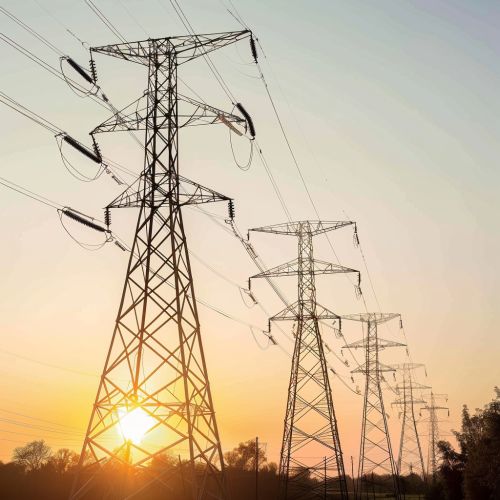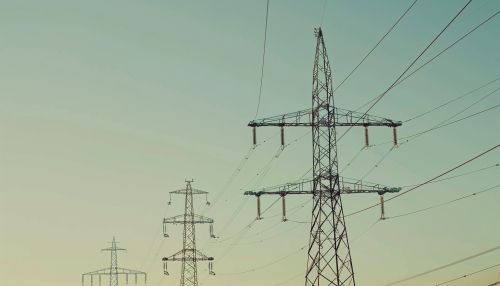Electric power transmission
Introduction
Electric power transmission is the bulk movement of electrical energy from a generating site, such as a power plant, to an electrical substation. The interconnected lines which facilitate this movement are known as a transmission network. This is distinct from the local wiring between high-voltage substations and customers, which is typically referred to as electric power distribution. The combined transmission and distribution network is known as the "power grid" in North America, or just "the grid". In the United Kingdom, India, Malaysia and New Zealand, the network is known as the "National Grid".


History
The first transmission of electrical energy was performed in 1882 on a 2 km line at 2kV DC in Miesbach, Bavaria before the war of currents. In 1886, in Great Barrington, Massachusetts, U.S., an alternating current electrical substation was built. It stepped down the voltage from 500 volts to 100 volts using a transformer. This was followed by the demonstration of the practicality of AC power transmission in San Francisco by Tesla and Westinghouse in 1891.
Transmission Network
The transmission network is typically administered on a regional basis by an entity such as a transmission system operator or a transmission and distribution service provider. The transmission network is designed to transport the power from the generators to the distribution network safely and efficiently. The transmission network is interconnected with other regions' transmission networks, forming a larger, grid-like structure.
Transmission Lines
Transmission lines, when interconnected with each other, become transmission networks. In the US, these are typically referred to as "power grids" or simply "the grid". Transmission lines are distinguished from other high-voltage lines in that they carry electricity over long distances. They are also characterized by their large towers and multiple conductors.
High Voltage Direct Current
High Voltage Direct Current (HVDC) is a method of transmitting electricity by converting it to DC using a converter station. This method is particularly suitable for long-distance transmission and undersea cables. HVDC is less expensive and suffers less electrical loss than equivalent AC transmission, but is more complex due to the conversion equipment needed at either end of the line.
Transformers
Transformers are key components in electrical transmission systems. They allow the voltage of electricity to be stepped up for transmission and distribution, or stepped down for use. Transformers work on the principle of electromagnetic induction, where a changing magnetic field induces a current in a nearby circuit.
Transmission Losses
Transmission losses occur as electricity is transported from the generating station to the consumer. These losses are primarily due to the resistance of the transmission lines, but can also be due to corona discharge and other phenomena. Transmission losses are a significant factor in the efficiency of the power grid, and minimizing these losses is a major focus of grid design.
Economic Considerations
The economics of electric power transmission are a complex mix of factors. These include the cost of fuel for power plants, the cost of building and maintaining the transmission network, the cost of losses during transmission, and the value of the electricity to the end user. There are also regulatory and policy considerations, as the transmission of electricity is typically a regulated industry.
Environmental Impact
The environmental impact of electric power transmission is significant. Transmission lines can have a visual impact on the landscape, and can also have an impact on wildlife, particularly birds. The generation of electricity for transmission can also have a significant environmental impact, depending on the source of the power.
Future Trends
Future trends in electric power transmission include the development of smart grids, the use of superconductors in transmission lines, and the increasing use of renewable energy sources. Smart grids allow for more efficient use of electricity by adjusting demand in real time, while superconductors can carry electricity with virtually no loss.
